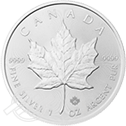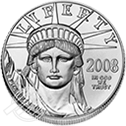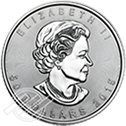Rules for Silver IRA investing
A Silver IRA allows you to invest in physical silver—bars and coins—inside of your individual retirement account.
First established in 1997, the Silver IRA has become the go-to for those looking to invest in silver with the funds they already have in their traditional, Roth, or SEP IRA.
If you’re interested in opening a Silver IRA, you’ll work with a highly trained account executive. This individual will walk you through the simple application process, educate you on what silver is eligible, and ensure that all of the Silver IRA rules are followed.
You will, in no time, be investing in silver within the safety and confines of your chosen IRA.
Open an Appropriate IRA Account
The Silver IRA is a self-directed account. That means that the power to choose is in your hands. Self-directed IRAs allow you to own traditional paper assets—such as stocks, bonds, treasuries, ETFs—as well as physical assets, like silver bars and silver coins.
You may own as much or as little of an asset class as you’d like. Many investors choose to hold only physical silver and gold, especially in turbulent times, which is allowed with a self-directed IRA.
There are three types of self-directed Silver IRAs:
- Traditional
- Roth
- Simplified Employee Pension (SEP)
A traditional Silver IRA allows you to make contributions using pre-tax funds, and the growth is on a tax-deferred basis. Current rules allow those 50 years and younger to contribute a maximum of $6,500 per year. Those over 50 years of age are allowed to contribute up to $7,500 per year. Contributions may be tax deductible in the year that they are made. Consult your tax advisor or CPA for more details.
The Roth Silver IRA is for those who want to use after-tax funds as their contribution, and then have no tax consequence when they are eligible to withdraw their funds. Roth funds enjoy tax-free growth because the taxes have already been paid. Like a traditional Silver IRA, the Roth IRAs allow contributions up to $6,500 for investors 50 years old and younger, and $6,500 for investors over age 50.
The SEP Silver IRA is for self-employed individuals or business owners. It operates similarly to the traditional Silver IRA, but because the SEP is often the only retirement plan that an individual owns, it allows higher contributions.
In a SEP, you are allowed to contribute up to $66,000 per year, or up to 25% of your income, whichever is less. You make contributions on a pre-tax basis, and they may be tax deductible in the year you make them.
You may withdraw funds without penalty starting at age 59 ½. Required distributions begin at 72.
Again, please check with your tax advisor or CPA for more clarification.
You may be eligible for an IRA rollover if you:
- Already have an IRA
- Are 59 1/2 and have a 401(k) or similar plan
- Have a 401(k) or similar plan from a previous employer
An IRA rollover allows you to convert your current plan, tax-free and penalty-free, into a self-directed Silver IRA. Because funds typically move directly from one account to another, you don’t need to make any withdrawals. You may redirect your funds into any asset allocation, and can easily convert funds that may have been in paper-based assets into physical silver bars and silver coins.
Purchase IRA-Approved Silver
Once you’ve set up and funded your account, your account executive will typically show you IRA-approved silver that’s available for purchase and storage.
To help ensure that Silver IRA investors only have investment-grade silver in their retirement accounts, the IRS has enacted the following standards:
- Coins must only be minted by approved government mints, be new, uncirculated, and in perfect physical condition.
- The silver must be 99.9% pure.
- Silver bars must be sourced from manufacturers by companies on the NYMEX or COMEX, or by other ISO 9000-approved manufacturers.
- Proof coins cannot be graded. They must be presented with their certificate of authenticity, and remain in their original packaging.
There are many great options for you to invest in silver! Some of the most popular IRA-approved silver coins are:
- Royal Canadian Mint – Lynx
- Royal Canadian Mint – Maple Leaf
- US Mint – Silver American Eagle
- Royal Canadian Mint – Eagle Coin
Understand Fees and IRA Rules and Restrictions
There are Silver IRA rules, fees, and restrictions. While most feel that the fees are reasonable and the rules and restrictions are simply protective, it is important to understand what they are.
Fees vary, depending on the account custodian that you use. You can expect to pay a one-time account setup fee, which is usually only around $50. Additionally, there will be an annual fee which may be roughly between $95 and $300, depending on whether you want to only own precious metals in your Silver IRA, or whether you want to own metals, stocks, and other IRA allowable assets.
It is also very important to understand Silver IRA rules for withdrawal of funds. Thorough knowledge and adherence to IRS guidelines will help prevent you from getting penalties or taxed unexpectedly.
For investors who choose a traditional Silver IRA or the SEP Silver IRA, it is important to note that Silver IRA rules allow withdrawals to begin at age 59 ½, and required minimum distributions (RMDs) must begin at age 72.
Withdrawals are considered earned income and will affect your taxes. To ensure you pay taxes on your investments, RMDs require you to start withdrawals every year at age 72.
It’s possible to make a withdrawal before age 59 1/2, but know that you’ll likely have to pay a 10% penalty.There are a few exceptions, such as paying essential health premiums after the loss of employment.
To avoid any surprises, it is best practice to consult a knowledgeable source before executing an early withdrawal.
For Roth Silver IRA holders, withdrawals may also begin with no penalty at age 59 ½. Because these individuals funded their accounts with after-tax money, all eligible withdrawals are tax free and not counted as income.
Early withdrawals from a Roth IRA suffer the same 10% penalty
consequence as they would from a traditional or a SEP IRA. Additionally, Roth IRAs have a five-year holding requirement. If you make a withdrawal before the five-year mark, you’ll receive a 10% penalty.
There are some exceptions to the rules of withdrawal, and in those cases no penalties would be handed down.
Select a Custodian
An IRA custodian is the keeper of an IRA account. Custodians are highly regulated credit unions, non-depository banks, or banks. To operate as a custodian, the IRS has to approve the institution’s procedures and internal controls, and they also have to adhere to strict policies.
You, as an IRA account owner, make the investment decisions for your account, and the custodian is responsible for executing those decisions.
They also ensure investment requests and all activities within your account adhere to Silver IRA rules.
For safekeeping, the custodian holds the titles of your assets on your behalf, and also reports any relative activity to the IRS.
Your custodian will give you your paperwork, account statements, and anything relevant regarding your account. Their institution’s name will be on the masthead.
Most Silver IRA companies partner with a particular custodian to maintain continuity and ease of use. If you’re unhappy with your custodian, you may request whatever approved custodian that you’d like.
Questions About Silver IRA Rules?
Whether you have questions about investing in silver, would like to know if you can invest in silver with a particular coin, or want to learn more about custodians, contact us at Advantage Gold.
We’ve educated and served investors like you for nearly a decade. We have thousands of satisfied clients and are the highest-rated precious metals firm in the industry.
We look forward to showing you why. Call today, or click the button below, let us know how to contact you, and an experienced account executive will do so right away.
Tags: invest in silver, investing in silver


